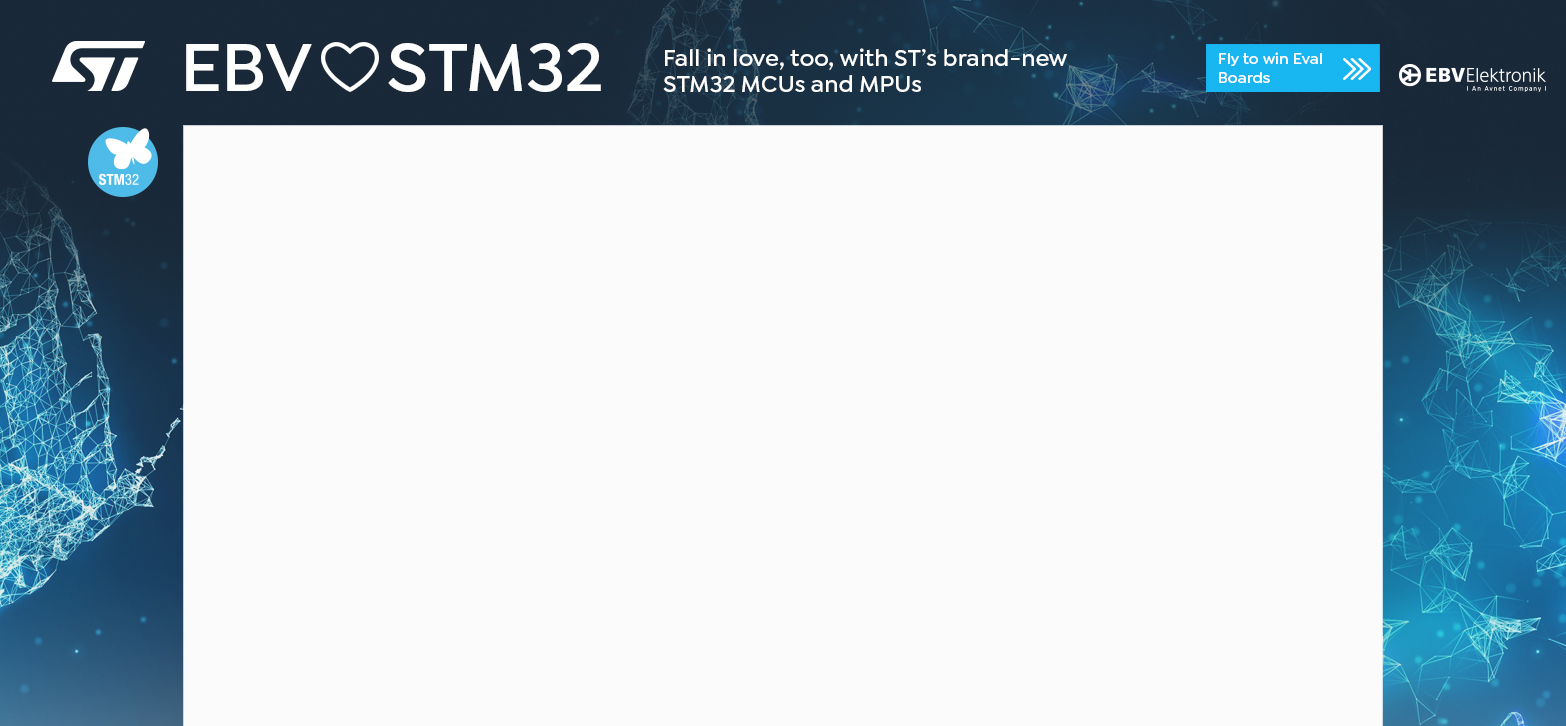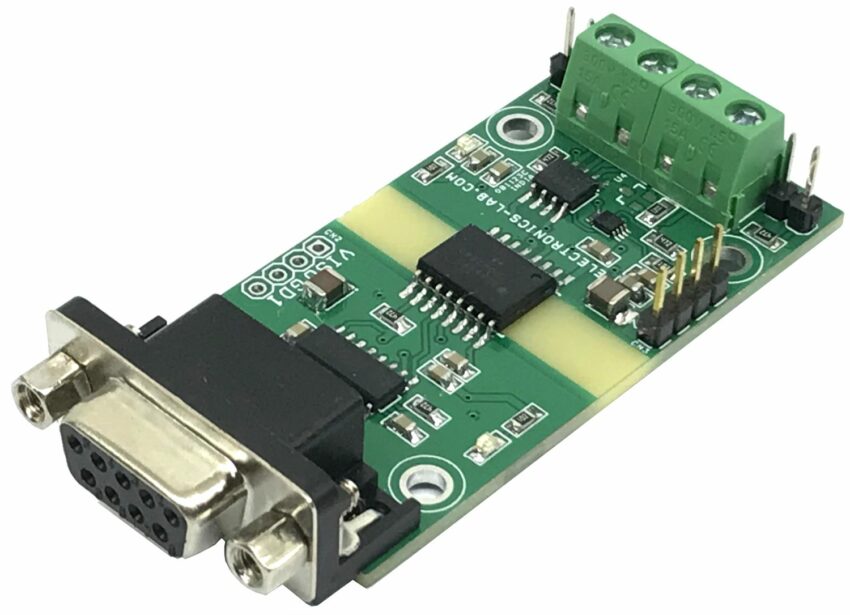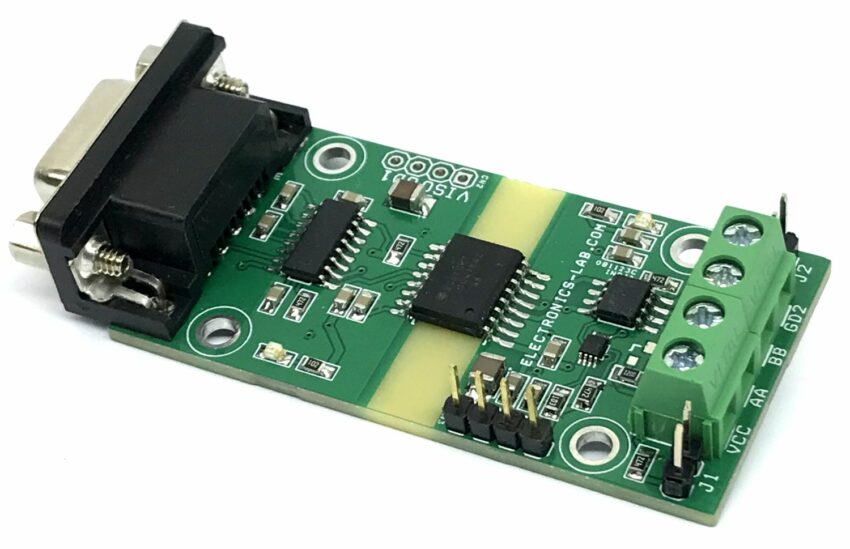Isolated RS-232 to RS-485 Signaling Converter
- Rajkumar Sharma
- 148 Views
- moderate
- Tested
- SKU: EL144088
- Quote Now
This project provides a solution for converting RS232 signaling to RS485 signaling. This allows long-distance communication since the range supported by RS232 is normally less than 50 feet while RS485’s range can exceed 1000 feet. The design features an RS232 transceiver, an RS485 transceiver, a multivibrator, and a digital isolator with integrated power to implement bidirectional half-duplex communication without any software interference. The board has been tested for up to 800 feet in length with a two-wire twisted pair cable. Up to 115200 baud rate communication between two PCs via serial port has been successful. The design features the industrial standard IEC 61000-4-2 and 61000-4-4 protection with 5000 Vrms isolation protection.
Circuit Courtesy: Texas Instruments Reference Design
Features
- Operating power supply 3.3V and 5V
- Single Supply Operation
- Convert RS232 to RS485 signaling for bidirectional half-duplex communication
- Without any Software Interference
- Industrial-level ESD Protection
- Isolation: 5000 Vrms Isolation Protection.
- Extend System Topology from Point-to-Point to Multi Drop
- Cable Length up to 1000 Feet
- Hot Plug-in Feature
- 4 x 3 mm Mounting Holes
- PCB Dimensions 62.56 x 31.99 mm
RS-232 is a widely used interface. One example is the serial port (COM port) of a PC. One drawback is that it can only support short distance communication (up to 50 ft). Some industrial applications need to extend the distance with robust communication. Converting RS-232 to RS-485 is one of the options, since RS-485 is widely used in industrial applications for long distance transmission. This project implements the conversion circuit via an RS-232 transceiver, an RS-485 transceiver, a digital isolator, and a multivibrator. The industrial-level ESD protection is also included. The simplified diagram is shown in Figure. The power of the system is provided from the RS-485 transceiver side. This supply is isolated by a digital isolator ISOW7842 and transferred to the RS-232 transceiver side. High speed RS-485 communication needs to be properly terminated and can take up to 50 mA current consumption depending on the bus loading conditions. The RS-232 transceiver TRS3232E is interfaced with the external device like a PC. The RS-232 signal is converted to the digital domain and then transferred to the other power domain by the digital isolator. In this isolated power domain, the received digital signal is converted to RS-485 signal by a RS-485 transceiver (THVD1410). In the meantime, the edge of the digital signal triggers the multivibrator SN74LVC1G123 to generate a pulse to enable the RS-485 transceiver’s transmission. In the idle state, the receiver of the RS-485 transceiver is turned on and the driver is turned off. When a valid signal shows up, the RS-485 transceiver is set into transmitter mode. Therefore, a half-duplex communication is established.
THVD1410
The THVD1410 is used for RS485 communication in this design. This device generates a compliant RS-485 standard output voltage with 3.3 V to 5 V supply and works for data transmission up to 500 kbps data rate. It has integrated ESD protection, such as ±18 kV IEC 61000-4-2 Contact Discharge and ±4 kV
IEC 61000-4-4 Fast Transient Burst immunity.
TRS3232E
The TRS3232E device comprises two RS-232-line drivers and two-line receivers with ±15-kV IEC ESD protection. This device works with a 3.3V or a 5 V supply and up to 250 kbps data rate. It meets the requirements of TIA/EIA-232-F and provides the electrical interface between an asynchronous communication controller and the serial-port connector. In this TI design, one of each line driver and receiver is used for TxD and RxD signal. The other channel is left as “no connect” with the option of being used as RTS/CTS or DTR/DSR in other applications.
ISOW7842
The ISOW7842 is a high-performance, quad-channel reinforced digital isolator with an integrated high efficiency power converter. The integrated DC-DC converter works with 3.3 V and 5 V supplies and provides up to 650 mW of isolated power at high efficiency. Like the TRS3232E configuration, the unused channels have the option of future channel extension of the application.
Connections
- CN1: Pin 1 = VCC 3.3V or 5V DC Power Input, Pin 2 = RS485 Channel A, Pin 3 = RS485 Channel B , Pin 4 = GND
- CN2: Do Note Populate
- CN3: Pin 1 & Pin 2 = VCC 3.3V or 5V DC Power Input, Pin 3 & 4 = GND
- D2: Power LED RS485 Side
- D1: Power LED RS232 Side
- P1: RS232 DSUB 9 Pin Female Connector
Schematic
Parts List
| NO | QNTY | REF | DESC | MANUFACTURER | SUPPLIER | SUPPLIER PART NO |
|---|---|---|---|---|---|---|
| 1 | 2 | CN1 | 2 PIN SCREW TERMINAL PITCH 5.08MM | PHOENIX | DIGIKEY | 277-1247-ND |
| 2 | 1 | CN2 | DNP | |||
| 3 | 1 | CN3 | 4 PIN MALE HEADER PITCH 2.54MM | WURTH | DIGIKEY | 732-5317-ND |
| 4 | 9 | C1,C2,C4,C5,C6,C7,C8,C9,C10 | 100nF/50V CERAMIC SMD SIZE 0805 | YAGEO/MURATA | DIGIKEY | |
| 5 | 1 | C3 | 1uF/25V CERAMIC SMD SIZE 0805 | YAGEO/MURATA | DIGIKEY | |
| 6 | 1 | C11 | 0.22uF/25V CERAMIC SMD SIZE 0805 | YAGEO/MURATA | DIGIKEY | |
| 7 | 2 | C12,C13 | 10uF/25V CERAMIC SMD SIZE `1210 | YAGEO/MURATA | DIGIKEY | |
| 8 | 2 | D1,D2 | LED SMD SIZE 0805 | OSRAM | DIGIKEY | 475-1278-1-ND |
| 9 | 2 | J1,J2 | 2 PIN MALE HEADER PITCH 2.54MM | WURTH | DIGIKEY | 732-5315-ND |
| 10 | 1 | P1 | 9 PIN FEMALE DSUB | AMPHENOL | DIGIKEY | 609-6494-ND |
| 11 | 1 | R1 | 120E 5% SMD SIZE 0805 | YAGEO/MURATA | DIGIKEY | |
| 12 | 6 | R2,R3,R4,R5,R8,R10 | 4.7K 5% SMD SIZE 0805 | YAGEO/MURATA | DIGIKEY | |
| 13 | 2 | R6,R7 | 1K 5% SMD SIZE 0805 | YAGEO/MURATA | DIGIKEY | |
| 14 | 1 | R9 | 10K 5% SMD SIZE 0805 | YAGEO/MURATA | DIGIKEY | |
| 15 | 1 | U1 | TRS3232 | TI | DIGIKEY | 296-22597-1-ND |
| 16 | 1 | U2 | ISOW7842 | TI | DIGIKEY | 296-51218-1-ND |
| 17 | 1 | U3 | THVD1410D | TI | DIGIKEY | 296-THVD1410D-ND |
| 18 | 1 | U4 | SM712 | SMC DIODE | DIGIKEY | 1655-SM712CT-ND |
| 19 | 1 | U5 | SN74LVC1G123DCUR | TI | DIGIKEY | 296-18578-1-ND |
| 20 | 2 | SHUNT | SHUNT FOR J1,J2 | SULLINS CONCT | DIGIKEY | S9001-ND |
Connections
Block Diagram

























